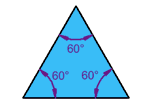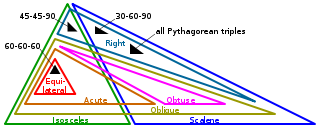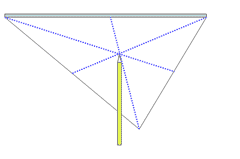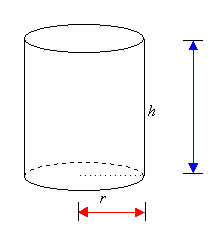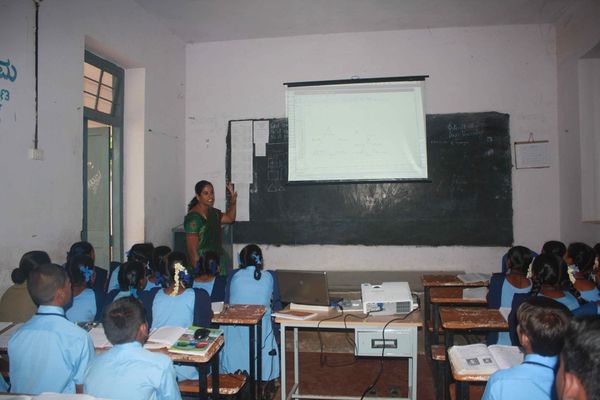Difference between revisions of "Triangles"
suchethass (talk | contribs) |
suchethass (talk | contribs) |
||
| Line 166: | Line 166: | ||
# Is it possible to construct a triangle with 3 collinear points? | # Is it possible to construct a triangle with 3 collinear points? | ||
# Is it possible to construct a triangle whose sides are 3cm, 4cm and 9cm. Give reason. | # Is it possible to construct a triangle whose sides are 3cm, 4cm and 9cm. Give reason. | ||
| − | |||
| − | |||
| − | |||
| − | |||
| − | |||
| − | |||
| − | |||
| − | |||
| − | |||
| − | |||
| − | |||
| − | |||
| − | |||
| − | |||
| − | |||
| − | |||
| − | |||
| − | |||
| − | |||
| − | |||
| − | |||
| − | |||
| − | |||
| − | |||
| − | |||
| − | |||
| − | |||
| − | |||
| − | |||
| − | |||
| − | |||
| − | |||
| − | |||
| − | |||
| − | |||
| − | |||
| − | |||
| − | |||
| − | |||
| − | |||
| − | |||
| − | |||
| − | |||
| − | |||
| − | |||
| − | |||
| − | |||
| − | |||
| − | |||
| − | |||
| − | |||
| − | |||
| − | |||
| − | |||
| − | |||
| − | |||
| − | |||
| − | |||
| − | |||
| − | |||
| − | |||
| − | |||
| − | |||
| − | |||
| − | |||
| − | |||
| − | |||
| − | |||
| − | |||
| − | |||
| − | |||
| − | |||
| − | |||
| − | |||
| − | |||
| − | |||
| − | |||
| − | |||
| − | |||
| − | |||
| − | |||
| − | |||
| − | |||
| − | |||
| − | |||
| − | |||
| − | |||
| − | |||
| − | |||
| − | |||
| − | |||
| − | |||
| − | |||
| − | |||
| − | |||
| − | |||
| − | |||
| − | |||
| − | |||
| − | |||
| − | |||
| − | |||
| − | |||
| − | |||
| − | |||
| − | |||
| − | |||
| − | |||
| − | |||
| − | |||
| − | |||
| − | |||
| − | |||
| − | |||
| − | |||
| − | |||
| − | |||
| − | |||
| − | |||
| − | |||
| − | |||
| − | |||
| − | |||
| − | |||
| − | |||
| − | |||
| − | |||
| − | |||
| − | |||
| − | |||
| − | |||
| − | |||
| − | |||
| − | |||
| − | |||
| − | |||
| − | |||
| − | |||
| − | |||
| − | |||
| − | |||
| − | |||
| − | |||
| − | |||
| − | |||
| − | |||
| − | |||
| Line 636: | Line 489: | ||
== Enrichment Activities == | == Enrichment Activities == | ||
| − | + | ||
= Pythagorean Theorem = | = Pythagorean Theorem = | ||
Revision as of 01:46, 6 December 2013
| Philosophy of Mathematics |
While creating a resource page, please click here for a resource creation checklist.
Concept Map
Error: Mind Map file 5._Triangles.mm not found
Textbook
To add textbook links, please follow these instructions to: (Click to create the subpage)
Additional Information
Useful websites
This is a reference website for types and classification off triangles
Reference Books
Teaching Outlines
Concept #1 What is a triangle
Learning objectives
- Triangle is a polygon
- Sides and angles determine the type of triangle
Notes for teachers
These are short notes that the teacher wants to share about the concept, any locally relevant information, specific instructions on what kind of methodology used and common misconceptions/mistakes.
Activity No #1 - Make your triangle
- Estimated Time - 40 minutes
- Materials/ Resources needed
- Prerequisites/Instructions, if any
- Multimedia resources
- Website interactives/ links/ Geogebra Applets
- Process (How to do the activity)
Mark three non-collinear point P, Q and R on a paper. Join these points in all possible ways. The segments are PQ, QR and RP. A simple close curve formed by these three segments is called a triangle. It is named in one of the following ways.
Triangle PQR or Triangle PRQ or Triangle QRP or Triangle RPQ or Triangle RQP .
- Developmental Questions (What discussion questions)
A triangle is one of the basic shapes of geometry: a polygon with three corners or vertices and three sides or edges which are line segments. In fact, it is the polygon with the least number of sides.
A triangle PQR consists of all the points on the line segment PQ,QR and RP. The three line segments, PQ, QR and RP that form the triangle PQ, are called the sides of the triangle PQR.
How many angles? A triangle has three angles. In figure, the three angles are ∠PQR ∠QRP and ∠RPQ A triangle has six parts, namely, three sides,PQ QRand RP.Three angles ∠PQR ∠QRP and ∠RPQ. These are also known as the elements of a triangle.
What are the intersection points of line segments? The point of intersection of the sides of a triangle is known as its vertex. In figure, the three vertices are P, Q and R. In a triangle, an angle is formed at the vertex. Since it has three vertices, so three angles are formed. The word triangle =tri + angle ‘tri’ means three. So, triangle means closed figure of straight lines having three angles.
- Evaluation (Questions for assessment of the child)
- Question Corner
Activity No #
- Estimated Time
- Materials/ Resources needed
- Prerequisites/Instructions, if any
- Multimedia resources
- Website interactives/ links/ Geogebra Applets
- Process (How to do the activity)
- Developmental Questions (What discussion questions)
- Evaluation (Questions for assessment of the child)
- Question Corner
Concept #
Learning objectives
Notes for teachers
These are short notes that the teacher wants to share about the concept, any locally relevant information, specific instructions on what kind of methodology used and common misconceptions/mistakes.
Activity No #
- Estimated Time
- Materials/ Resources needed
- Prerequisites/Instructions, if any
- Multimedia resources
- Website interactives/ links/ Geogebra Applets
- Process (How to do the activity)
- Developmental Questions (What discussion questions)
- Evaluation (Questions for assessment of the child)
- Question Corner
Activity No #
- Estimated Time
- Materials/ Resources needed
- Prerequisites/Instructions, if any
- Multimedia resources
- Website interactives/ links/ Geogebra Applets
- Process (How to do the activity)
- Developmental Questions (What discussion questions)
- Evaluation (Questions for assessment of the child)
- Question Corner
Hints for difficult problems
Project Ideas
Math Fun
Usage
Create a new page and type {{subst:Math-Content}} to use this template
Enrichment Activities
Activities
Activity 1: Identifying and Naming Triangles
Learning Objectives
Identify and name the triangles
Material and Resources Required
Pre-requisites/Instructions
Identify and name the triangles in the following Figure.
Evaluation
- Is it possible to construct a triangle with 3 collinear points?
- Is it possible to construct a triangle whose sides are 3cm, 4cm and 9cm. Give reason.
Summary of triangle centres
There are many types of triangle centers. Below are four of the most common.
|
Incenter
|
|
Located at intersection of the angle bisectors. See Triangle incenter definition
|
|
Circumcenter
|
|
Located at intersection of the perpendicular bisectors of the sides. See Triangle circumcenter definition
|
|
Centroid
|
|
Located at intersection of medians. See Centroid of a triangle
|
|
Orthocenter
|
|
Located at intersection of the altitudes of the triangle. See Orthocenter of a triangle
|
In the case of an equilateral triangle, all four of the above centers occur at the same point.
The Incenter of a
triangle
Latin: in - "inside,
within" centrum - "center"
The point where the
three angle bisectors of a triangle meet.
One of a triangle's
points of concurrency.
Try this Drag the
orange dots on each vertex to reshape the triangle. Note the way the
three angle bisectors always meet at the incenter.
One of several centers the triangle can have, the
incenter is the point where the angle bisectors intersect. The
incenter is also the center of the triangle's incircle - the largest
circle that will fit inside the triangle.
Centroid of a Triangle
From Latin: centrum - "center", and Greek: -oid -"like" The point where the three medians of the triangle intersect. The 'center of gravity' of the triangle One of a triangle's points of concurrency. Try this Drag the orange dots at A,B or C and note where the centroid is for various triangle shapes.
Refer to the figure . Imagine you have a
triangular metal plate, and try and balance it on a point - say a
pencil tip. Once you have found the point at which it will balance,
that is the centroid.
The centroid of a triangle is the point through which all the mass of a triangular plate seems to act. Also known as its 'center of gravity' , 'center of mass' , or barycenter.
A fascinating fact is that the centroid is the
point where the triangle's medians intersect. See medians of a
triangle for more information. In the diagram above, the medians of
the triangle are shown as dotted blue lines.
Centroid facts
- The centroid is always inside the triangle
- Each median divides the triangle into two smaller triangles of equal area.
- The centroid is exactly two-thirds the way along each median.
Put another way, the centroid divides each median into two segments whose lengths are in the ratio 2:1, with the longest one nearest the vertex. These lengths are shown on the one of the medians in the figure at the top of the page so you can verify this property for yourself.
Orthocenter of a Triangle
From Greek: orthos - "straight, true, correct, regular" The point where the three altitudes of a triangle intersect. One of a triangle's points of concurrency.
Try this Drag the
orange dots on any vertex to reshape the triangle. Notice the
location of the orthocenter.
The altitude of a triangle (in the sense it used here) is a line which passes through a vertex of the triangle and is perpendicular to the opposite side. There are therefore three altitudes possible, one from each vertex. See Altitude definition.
It turns out that all three altitudes always
intersect at the same point - the so-called orthocenter of the
triangle.
The orthocenter is not always inside the triangle.
If the triangle is obtuse, it will be outside. To make this happen
the altitude lines have to be extended so they cross. Adjust the
figure above and create a triangle where the orthocenter is outside
the triangle. Follow each line and convince yourself that the three
altitudes, when extended the right way, do in fact intersect at the
orthocenter.
Activity 1 Types of Triangles
Learning Objectives
Be able to identify triangles.
Material and Resources Required
Pre-requisites/Instructions
Identify the types of triangles.
|
|
|
|
|
|
|
|
Evaluation
- Can a scalene triangle also be a right-angled triangle ? If yes can you draw one ?
Activity 2 Similar Triangles
Learning Objective
To show similar planar
figures, discuss congruence and properties of congruent/ similar
triangles
Material and Resources Required
Blackboard
Geogebra files +
projector
Calculator
- Planar figures and triangles
- Draw pairs of figures on the board [ both similar and dissimilar]; they can identify overlap of congruent figures
- Ask the children to identify
- If the children know the names of the theorem, ask them to explain- ask them what is SSS, AAA, ASA
- Show ratio and give the idea of proportionality
- Geogebra files. When I change the sides/ proportion, the triangles change in size. But the proportion remains the same, angle remains the same
- With calculator they verify proportion (this is very very useful for involving the whole class) they all can see the proportion remains constant though the size changes
- Show the arithmetic behind the proportion
Evaluation
[Activity evaluation - What should the teacher watch for when you do the activity; based on what they know change]
- Confusion between congruence and similarity
- When they give the theorem, if they cannot identify included side and angle
- When there is a wrong answer, identify what is the source of the confusion – sides, ratio and proportion
- Direct substitution
Evaluation
Self-Evaluation
Further Explorations
Enrichment Activities
Pythagorean Theorem
Pythagoras' Theorem was discovered by Pythagoras, a Greek mathematician and philosopher who lived between approximately 569 BC and 500 BC.
Pythagoras'
Theorem states that:
In
any right-angled triangle, the square of the hypotenuse is equal
to the sum of the squares of the other two sides. That is:
Pythagoras' Theorem in
Three Dimensions
A
three-dimensional object can be described by three measurements -
length, width and height.
We
can use Pythagoras' Theorem to find the length of the longest
straw that will fit inside
the
box or cylinder.
Evaluation
Self-Evaluation
Further Explorations
Enrichment Activities
See Also
Teachers Corner
Suchetha . S. S Asst. Teacher ( Mathematics ) GJC Thyamagondlu. Nelamangala Talluk Bangalore Rural District doing a lesson on similar triangles using GeoGebra in the classroom
GeoGebra Contributions
- The GeoGebra file below to understand Similar Triangles
- Similar Triangles Part 1 http://www.karnatakaeducation.org.in/KOER/Maths/Similar_Triangles_1.html
- Download ggb file here http://www.karnatakaeducation.org.in/KOER/Maths/Similar_Triangles_1.ggb
- Similar Triangles Part 2 http://www.karnatakaeducation.org.in/KOER/Maths/Similar_Triangles_2.html
- Download ggb file here http://www.karnatakaeducation.org.in/KOER/Maths/Similar_Triangles_2.ggb
- Similar Triangles Part 3 http://www.karnatakaeducation.org.in/KOER/Maths/Similar_Triangles_3.html
- Download ggb file here http://www.karnatakaeducation.org.in/KOER/Maths/Similar_Triangles_3.ggb
- See a video to understand this concept http://www.youtube.com/watch?v=BI-rtfZVXy0
- The GeoGebra file below verifies the Thales theorem
- Thales Theorem http://www.karnatakaeducation.org.in/KOER/Maths/thales_theorem.html
- Download ggb file here http://www.karnatakaeducation.org.in/KOER/Maths/thales_theorem.ggb
- See a video that proves this theorem http://www.youtube.com/watch?v=Y-6yYsuGLoc
